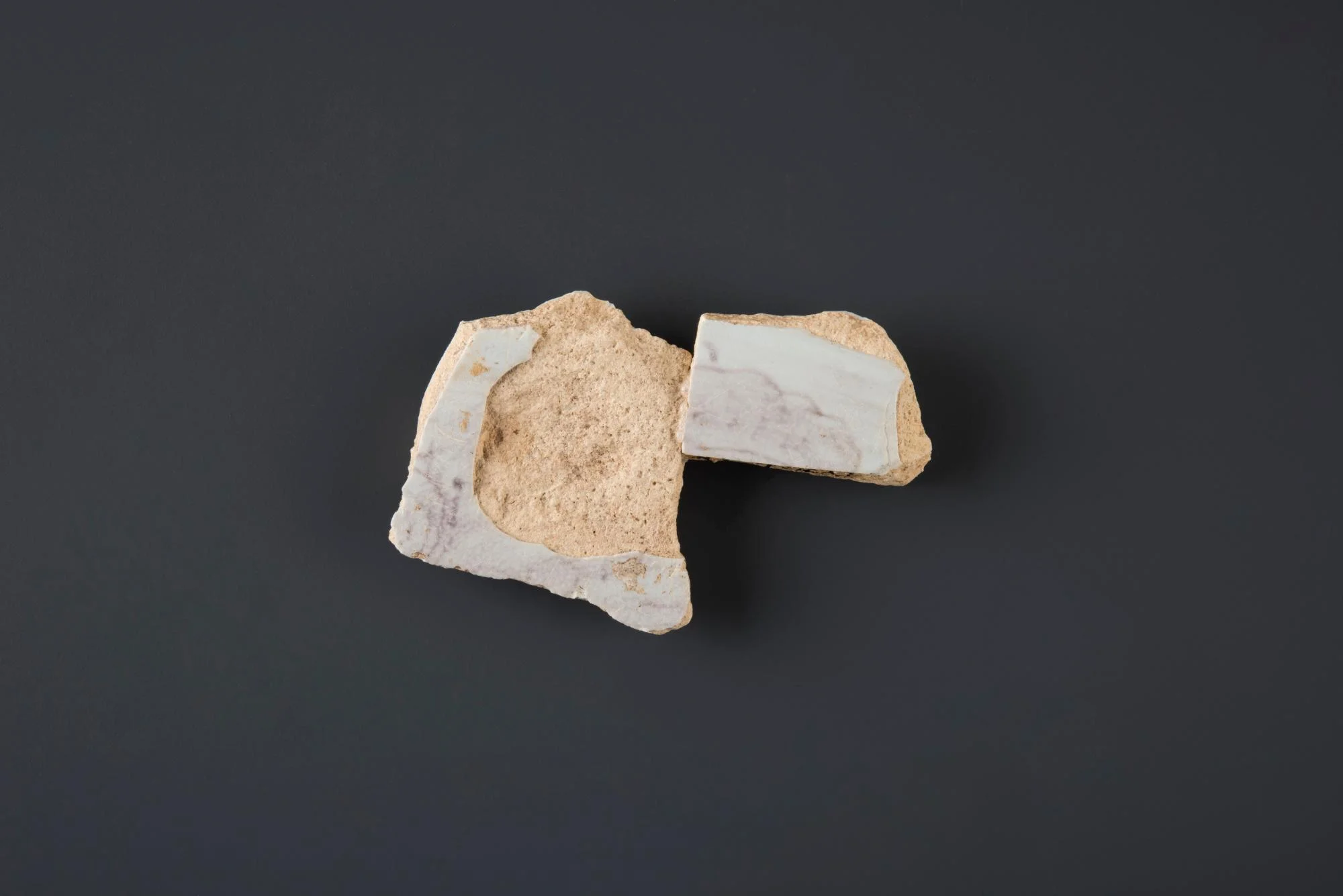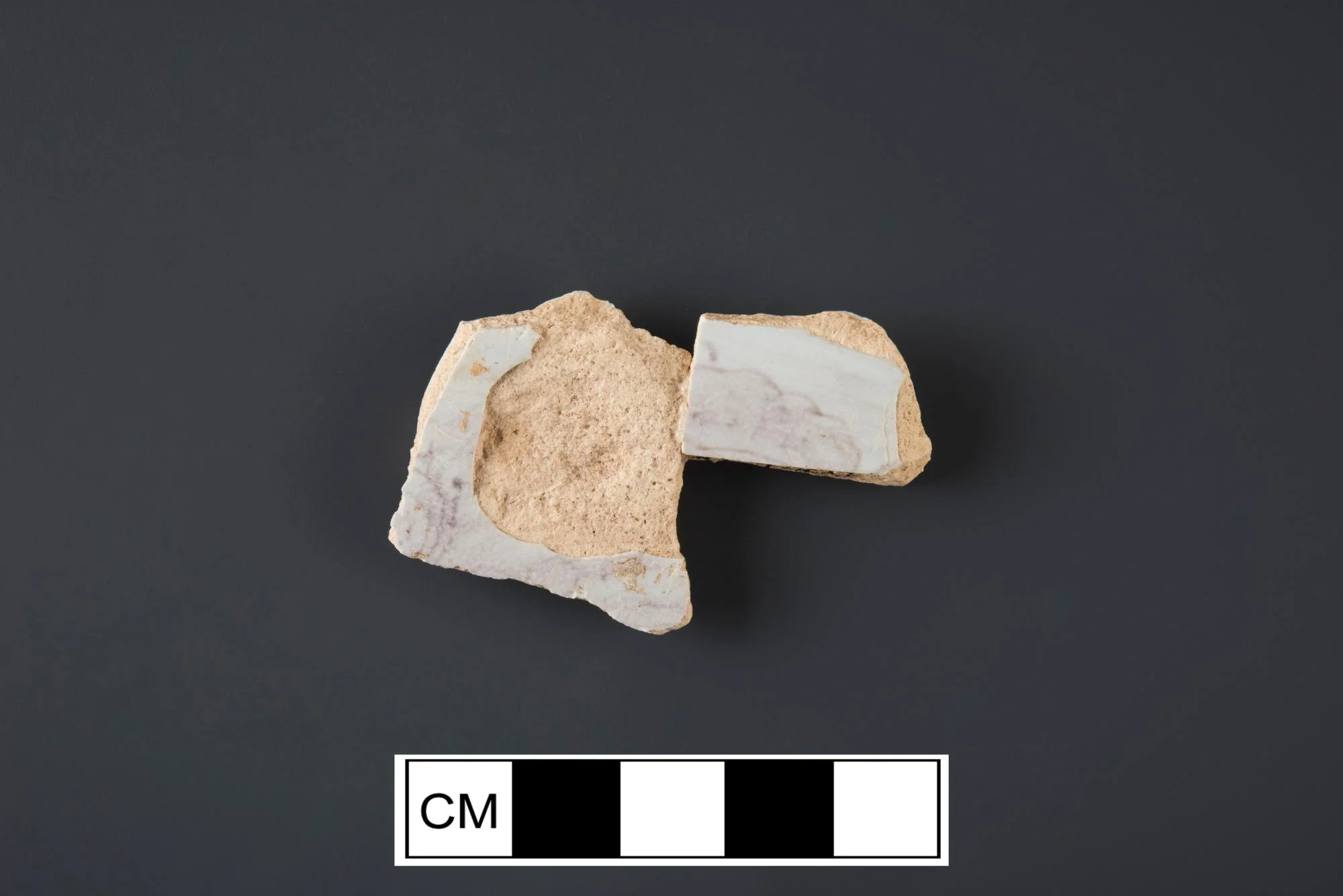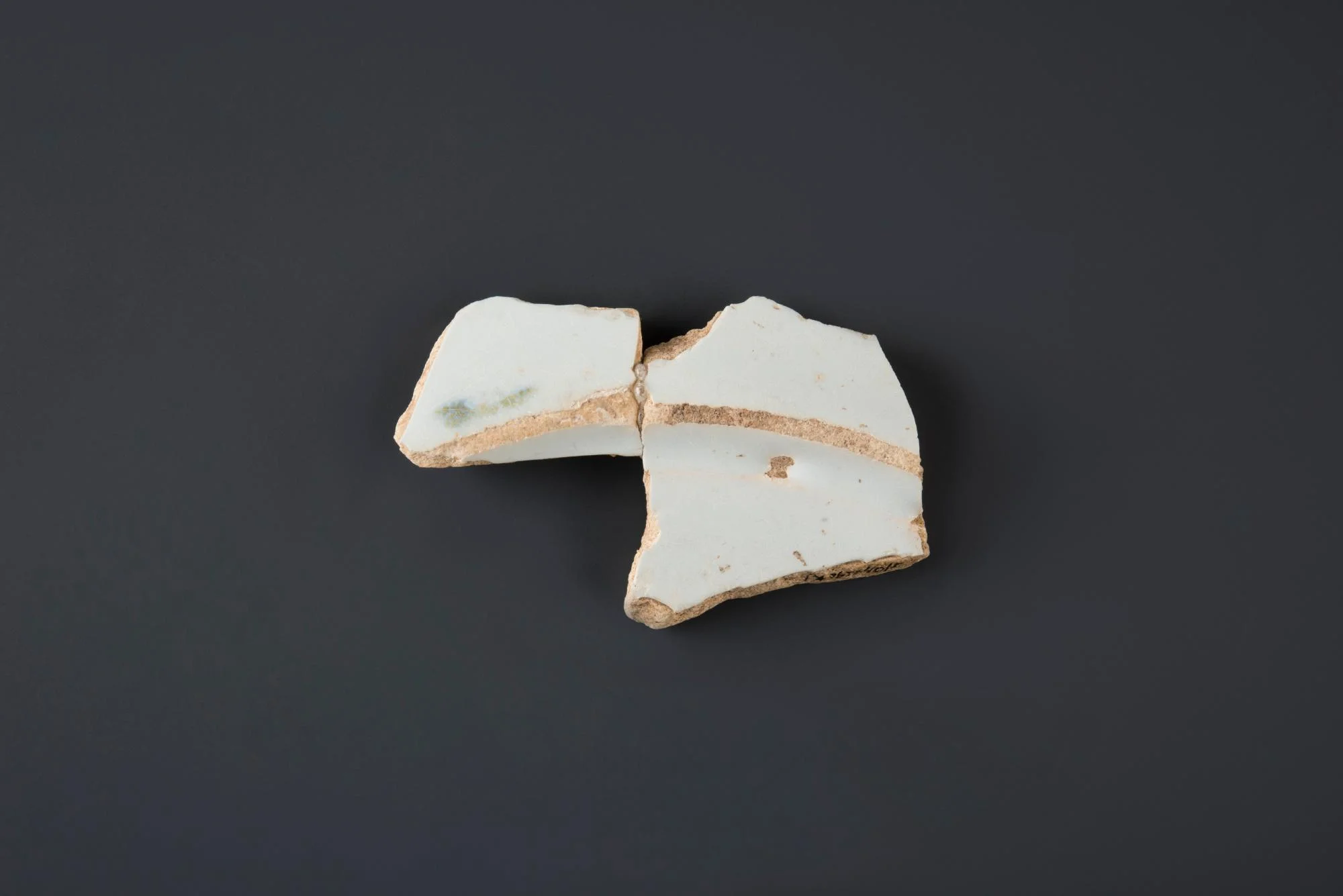Notes
This is fragment of a tin-glazed earthenware dish or plate. This ware is often referred to by archaeologists as delftware. Ceramics such as these were produced in numerous locations in both Britain and Holland beginning in the seventeenth-century, though production continued through the end of the following century. These wares mimicked more expensive Chinese export porcelain in both the white color of the glaze and the use of cobalt blue in the decoration. This example, however, demonstrates the use of polychrome, or multiple colors, to decorate a vessel. Purple paint was made from manganese. While very fragmentary, the purple painted decoration is a rock, which forms part of a larger landscape scene originally colored in reds, greens, as well as purples. Generally, delftware was supplanted as a fashionable ceramic for tea and tableware as the eighteenth century wore one, being replaced by both porcelains and newer British ceramics, such as white salt glazed stonewares and eventually refined earthenwares like creamware.
Object Type
Has it Been Conserved?
No
Where Was It Found?
Project Site: House for Families [more details]
Material
Vessel
Manufacturing Technology
Form
Completeness
Decorative Technology
Decorative Notes
Handpainted purple landscape/hills. Identical to scene on plate/dish from N. Dependency trash pit with handpainted polychrome purple, green, and reddish/orange landscape scene.
Date
1600-1775
Country of Origin
Dimensions
35mm x 0mm x 35mm (W x H x L)
Illustration shows object in comparison to the size of a quarter
Weight
4.6 gram(s)
Object Number
1722589. TG V.2
DAACS Number
1722589
Project: House for Families
The structure identified as the “House for Families” on the 1787 Vaughan plan likely housed the majority of the enslaved population living at the Mansion House Farm for much of the second half of the eighteenth century. The building was in existence from circa 1760 until it was demolished in late 1792 or early 1793. The archaeological evidence for the structure consisted of a brick-lined storage cellar (44FX762/40-47) measuring roughly six feet by six feet. Historically the cellar served as a handy trash receptacle once it ceased to be used for its original storage function, and through extensive excavation has yielded an extremely rich assemblage of household refuse. The analysis of these remains offers the opportunity to study important aspects of the daily lives of Mount Vernon's enslaved community.
See All Objects From this Dig


 Ceramic
Ceramic